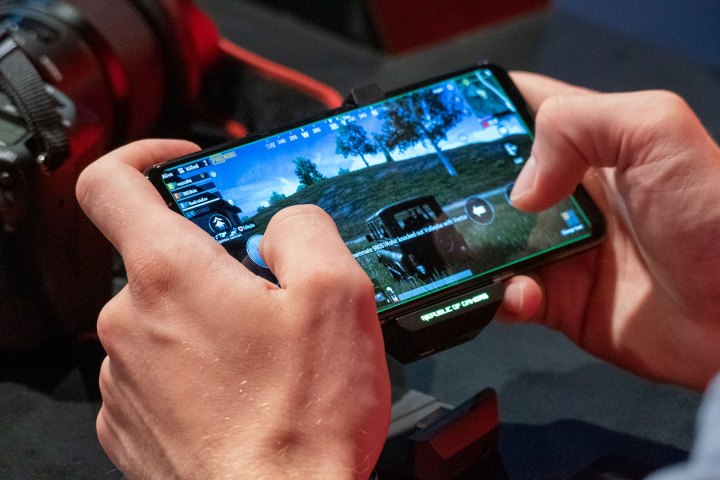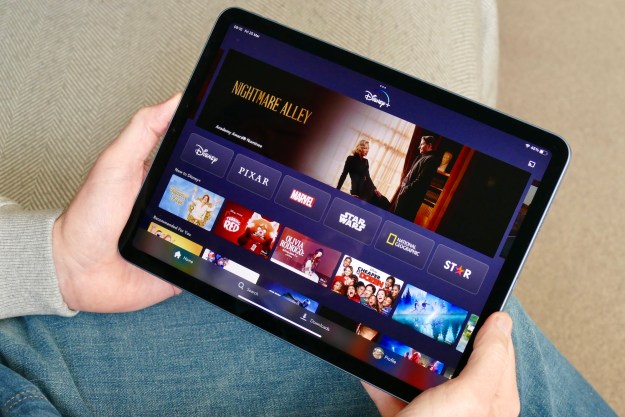A number of manufacturers have added 90Hz and 120Hz displays to smartphones — like the Samsung Galaxy S22 Ultra or Google Pixel 7 Pro — and lots of numbers are being thrown around (60Hz, 90Hz, 120Hz), but what do they mean? Most importantly, what will they mean for how you’ll use your smartphone?
Smartphones are getting more and more powerful, but with the last generation’s hardware still holding its own, the jump from generation to generation doesn’t seem as great as it once did. Where are manufacturers to go when a new phone doesn’t feel more powerful than last year’s device? One alternative is to make it feel smoother and more responsive — and a great way to do that is to increase the refresh rate of its display.
If you don’t know why you should get excited about a 120Hz display, then this guide is for you. We’re going to break down what an increase in refresh rate is, how it will benefit your smartphone in the long run, and what exactly the adaptive refresh rate on the iPhone 14 Pro really is.
What is refresh rate?
Before we can explain how a 90Hz or 120Hz display will benefit you, we need to unravel exactly what refresh rate is, and to do that, we need to know how displays work. There’s a lot of technical stuff involved here, but at its most basic level, a display works by showing you a series of images, or “frames.” To make a video, displays need to show a series of frames, one after another. The refresh rate of a monitor is how many times an image is updated per second. So a 60Hz display refreshes its image 60 times a second. This is obviously too fast for your brain to track, so it’s tricked into thinking it is watching a moving image rather than a series of single frames.
A higher refresh rate means more images are shown in the same amount of time, which means any movement between each frame seems smoother. Because there are more frames, it reduces the gap between individual frames. While not something you’re likely to consciously notice, most people can feel some difference between refresh rates. Also, more images mean changes resolve quicker — so your phone will feel more responsive, as it seems to react more quickly to your commands.
It sounds similar to your graphic processor’s frame rate, and that’s because it is. Frame rate is measured in frames-per-second, or fps, and that is how quickly a graphics processor can process and deliver individual images to your display. You’ll need a monitor with a refresh rate of at least 120Hz to display 120 fps at its finest. However, while refresh rate is similar to fps, it’s not the same thing. Refresh rate is tied to the monitor itself, while the frame rate is how quickly information is sent to your monitor by your graphics processor.
What difference will you notice between 60Hz, 90Hz, and 120Hz?

We’ve already covered this in the last section, but it’s worth mentioning again that an increase in smoothness and responsiveness are the primary benefits you’ll get from an increased refresh rate. Scrolling through your apps and swiping across menus will feel smoother and more responsive as a result of the higher refresh rate. Motion blur — the blur you see between actions — will also be reduced as a result of the higher refresh rate.
But a higher refresh rate isn’t just about day-to-day usability. Gaming performance is one of the biggest beneficiaries of a higher refresh rate, and it’s for this reason gaming phones led the charge on higher refresh rates. Phones like the Razer Phone 2 and the Asus ROG Phone 2 were amongst the first to pack higher refresh rates than normal for a reason, and it’s because a display with a higher refresh rate also has lower input lag. Input lag is the time between an action being triggered on the display and it taking place in the game. A standard 60Hz display cannot have an input lag faster than 16.63 milliseconds because that’s how long it takes for each image to refresh, while a 120Hz display can reach 8.33 milliseconds, as it refreshes twice as often.
If you’re really not sure whether you’ll see the benefit from using a device with a 90Hz or 120Hz display, we recommend heading out to a carrier or manufacturer store and trying out the phone or tablet for yourself. When it comes to refresh rate increases, the proof is really in the pudding, and there’s no way to explain the difference it makes without trying it for yourself.
Does it have downsides?
Like many technological advancements, an increase in refresh rate does come with a few potential pitfalls. The biggest disadvantage is increased battery consumption. Pushing out twice as many frames means an increased burden on the battery, and if your phone struggles with slim battery life at the best of times, you may want to disable the higher refresh rate in order to save juice. The option to disable higher refresh rates is available on most phones with refresh rates higher than 60Hz, and it was particularly useful on the Google Pixel 4, where an already small battery was seriously hampered by the 90Hz refresh rate.
Outside of taxing the battery, a higher refresh rate is just expensive overall. It’s still relatively new tech on smartphones, which means it’s likely to be restricted to flagship devices only for the next few years or so. Outside of specialized devices like gaming phones, don’t expect to see this on budget or midrange phones for the time being.
What is an adaptive refresh rate?

Samsung’s Galaxy S21 range didn’t just introduce a new design, it also debuted a brand new feature for smartphones — display tech with an adaptive refresh rate. Since then, we’ve seen the technology spread to other flagship phones, including Apple’s iPhone range and the Google Pixel phones. But what does it mean?
In basic terms, the phone is able to change the refresh rate to match your actions on screen. If you’re looking at a still image, it’ll pull the refresh rate down, as there’s less need to refresh the image every second. Or, if you’re playing a fast-paced game, it’ll ratchet the refresh rate up so you can get the best possible experience.
Why is this a feature you should be excited about? Changing between refresh rates often requires diving into your Settings menu, but any time you’re looking at a still image, you’re not really getting the benefit of the extra frames. However, it’ll still be pulling extra power from your battery, so giving your phone the ability to intelligently recognize when a higher refresh rate isn’t needed helps to keep battery consumption down.
The refresh rates on offer depend on the model you’re using. The Samsung Galaxy S21 and S21 Plus could access refresh rates between 48Hz and 120Hz, while the Galaxy S21 Ultra could switch anywhere between 10Hz and 120Hz. The wider refresh rate range means the S21 Ultra can push the refresh rate even further down when it’s not needed, saving even more battery. Thankfully, these days, most phones that offer this ability tend to offer rates between 1Hz and 120Hz.
Do you need a 90Hz or 120Hz refresh rate?

Absolutely not — much in the same way you don’t “need” a camera, flashlight, or pinball game on your smartphone. But anyone who has used a device with a 90Hz or 120Hz refresh rate will tell you the massive difference it makes to the way your device feels. At this point, it is purely a luxury, so if you are content with your current performance speeds, you don’t have to feel any pressure to invest in an improvement that still seems extraneous.
As the pace of technological innovation rushes on, you know that higher refresh rates will soon be the new normal. Refresh rates of 120Hz are still largely restricted to top-tier devices, like the iPad Pro, top-spec gaming phones, and flagships — but the 90Hz refresh rate is now included on some lower-priced smartphones, like the $600 Pixel 7.
Editors' Recommendations
- Will my phone automatically change for daylight saving time?
- Watch the Galaxy S23 Ultra and iPhone 14 Pro Max face off in brutal drop test
- Your Google One plan just got 2 big security updates to keep you safe online
- The best HP laptops
- The best smartwatches in 2023: our 11 favorite picks







